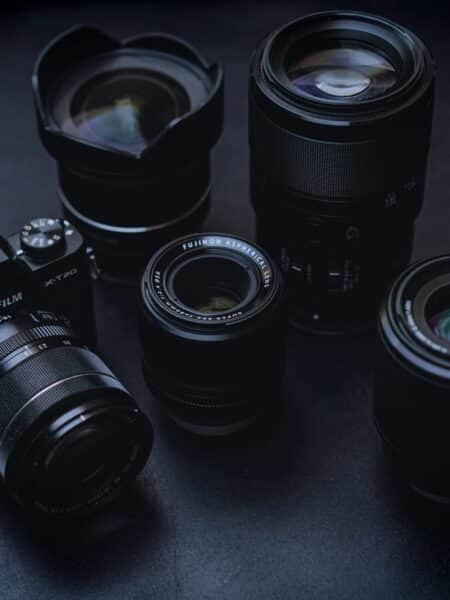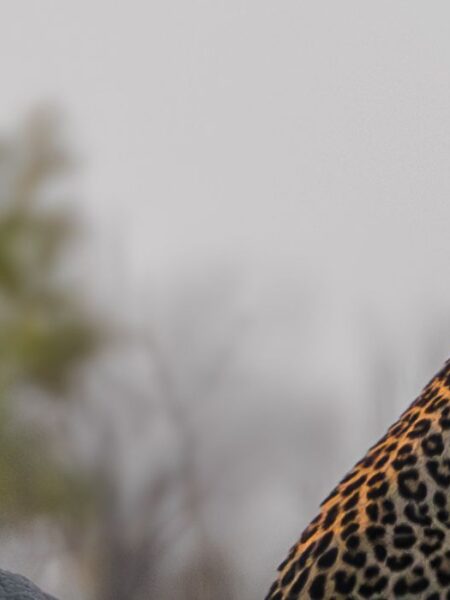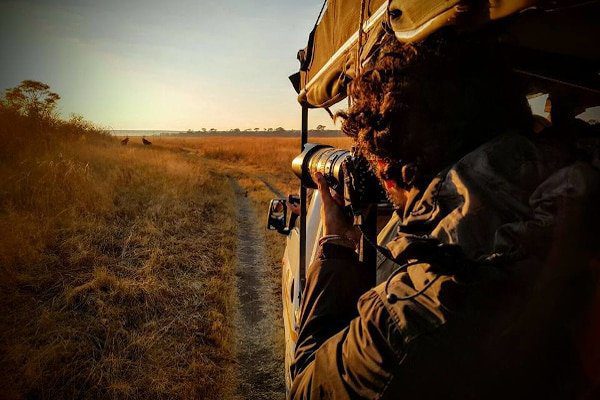Sophie Brown Shares Photography Tips for Every Time of Day
Golden hour. That beautiful time of day, the hour after sunrise or before sunset when the sun is low, casting long shadows and bathing everything it touches with stunning rosy light. It is my absolute favorite time to photograph because everything looks stunning!
However, it is far easier said than done to photograph during this time. Not only do you have to find a subject, but you also have to hope they are in the light and not sheltering in the shade of a tree or bush.
Watch: A Day in the Life of a Wildlife Photography Volunteer
I have talked to many photographers who swear by only heading out to photograph during this time. For me, I cannot help but find this restrictive and I hate to imagine how many photographic opportunities and sightings I would have missed out on if I’d limited myself to purely golden hour.
The reality is that we can photograph at any time of day, it is simply about knowing how to work with different types of available light.
I find that breaking it down into different times of day makes it easier to understand how the light will affect my camera settings.
Dawn and Dusk
Possibly the most challenging time of day to photograph.
The light is too weak to use fast shutter speeds without exceptionally high ISOs or heavily underexposed images. However, the light is too strong to use spotlights for any advantageous results. But naturally, this is the time when things start to become more active as it’s cooler, so things are happier to move around. I use this time to be creative and experiment, often by playing around with slow shutter speeds.
Try showing motion either by blurring the subject’s body (static blur) or the background your subject is against (motion blur).
Both are difficult techniques to master (I still only get a couple of successful ones for what feels like the hundreds that I take) but they are great fun and can become a little addictive. The key for me is to make sure you keep the eye of your subject in focus for it.
If this just isn’t your thing then that’s okay too, just look out for very relaxed subjects that are close to your vehicle. These subjects will be much more obliging at staying still long enough for you to get a sharp image using slightly lower shutter speed and higher ISO.
Knowing your camera’s noise capabilities (i.e. practice) will help you determine how high of an ISO you can use before your image becomes unusable.
Sunset, Sunrise, and Golden Hour
This is my absolute favorite time to photograph!
When shooting during this time, placing yourself between the sun and your subject is ideal as it is in this position that your subject will be bathed in that stunning light. However, positioning like this is not always possible. If the sun is behind your subject, look for rim-lighting and silhouettes. This can often lead to very dramatic and atmospheric results.
Also see: The Impact of Photography Volunteers
However, a word of caution when it comes to photographing during this time. It might be called Golden Hour, but at times can feel like the golden 15 minutes.
This is possibly the most important time of day to be watching your settings closely. The light will change rapidly, almost minute by minute at times, meaning you will have to be constantly aware of the sun. As it falls, you will find that your shutter speed will also have to slow down, while your ISO slowly rises.
Middle of the Day
When the sun is at its highest and shadows are harsh and directly below your subject. This bright light can initially seem like great conditions as you can work with faster shutter speeds and lower ISOs. However, it can be very difficult to expose your subjects well in this light.
The top of your subject is often bright and white (over-exposed) while the lower parts of your subject can appear dark and black (under-exposed), meaning we are losing detail in our subject.
Subjects are also typically less active during this hottest part of the day. Therefore, it is the time of day during which I photograph the least.
That being said, this doesn’t mean you shouldn’t look for photographic opportunities. Larger animals will be more forgiving to these unflattering (dare I say ugly) shadows. Equally, looking for animals in shade, which will also help avoid harsh shadows.
Night
A time many people write off photographically but that can, with a little perseverance and patience, be one of the most exciting times to photograph. The nocturnal world is very different from its daytime sister. Species such as aardvark, civet, genet, and owls come out to play and predator favorites such as leopards become more active, making night-time a dream to photograph in.
However, your strong beacon of light, the sun, has gone and in its place, a far weaker spotlight. This means your shutter speed will slow right down and your ISO will rise dramatically.
Check out the African Impact Photography Facebook page to see what photography volunteers get up to in South Africa!
A steady hand and a big dose of luck become essential to your photography now.
I find that I typically aim to shoot with a shutter speed of 1/100 or less with a wide-open aperture, and even working with those low numbers, my ISO will still be at least 3200.
It becomes about being selective with what you choose to photograph.
I want a subject that is close to the vehicle and relatively still. Slight movement is fine, there are still opportunities to play with motion blur and panning during this lack of light, although running animals will be almost (but not quite) impossible to capture effectively.
Weather
But it’s not all hard and fast. These are guidelines to follow but they shouldn’t be taken as gospel. This is because the time of day is not the only consideration when determining your camera settings. The weather also plays an important role.
For example: Photographing during the middle of the day in bright sunshine might not be ideal, but what if it’s overcast? Clouds act like a giant softbox over the sun, softening and diffusing the light. This gives far more leeway when photographing wildlife, effectively allowing you to photograph all day.
But watch your ISO carefully on these days. If the clouds are darker, you may have less light and need slightly higher ISO, if they are bright clouds you may not.
Follow Your Subject
Finally, look at where your subject is positioned. Is it in shade or sunlight? The answer to this will change your settings and how you shoot.
In shade, you will need a higher ISO or a slower shutter speed depending on how your subject is behaving. If it moves from sunlight to shade, or vice versa, be ready to change your settings quickly to continue making the most of your photography.
Ultimately, it is about being aware of light, how it is changing around you, and how this will affect both your subject and your camera settings.
After all, regardless of what type of photographer you are, the very essence of photography is about capturing light. By watching the light around you and evaluating whether you need to adjust your aperture, shutter speed, ISO, or even a combination of all three, you will be in the best possible position to capture images at any given time or opportunity.
Unfortunately, wildlife does not adhere to our schedules, it does not care which light it looks best in, so we cannot control at what point they will appear.
Also read: Advice from a Wildlife Photographer – Research is Key
My last bit of advice would be to know your ‘safe’ settings for different light conditions. Know what you need in order to freeze what you are seeing. This will allow you to bank safety shots at every sighting. From there you are free to play and experiment without the fear of missing out. This will allow you to continuously learn and develop, giving you more possibilities to photograph no matter what light you are in.
Volunteer abroad on a wildlife photography program and experience life as a wildlife photographer in one of the most beautiful and exciting places in the world – Africa!
Stay up to date and never miss out.
To stay up to date with our latest volunteer project developments, news and promotions. No spam, just high quality content.
"*" indicates required fields
Other recent blog posts

5 Best Projects for Volunteer Wildlife Conservation in Africa

Basic Camera Settings for Wildlife Photography











